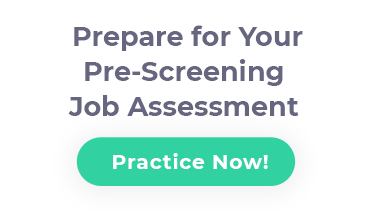In-Tray Exercise and Answers Online Preparation [2025]

Another common exercise in assessment centers is the in-tray exercise. Employers often use this to screen candidates and determine aptitude in a variety of areas during the hiring process. It is used by many different companies in all different sectors of business and is commonly found as part of the interview stage or an assessment center. Companies are also moving to e-tray exercises instead in-tray exercises since the exercises have the same concept but provide a more accurate understanding of the job-seeker or graduate’s abilities. Both tests will be discussed below.
What Are In-Tray Exercises?
In-tray exercises are paper-based simulations employers use to determine how well a candidate can prioritize tasks. The simulation is business-related, though it may or may not relate specifically to the job position the candidate applied for. The e-tray exercise is essentially the same, but it provides the documents via an email inbox instead of paper.
Scoring of In-Tray Tests
Candidates taking an in-tray test should be aware that the test assesses them on multiple areas. First and foremost, assessors are checking for the ability to prioritize tasks by importance, but the assessment goes beyond that. It will also assess the applicant’s demonstration of knowledge levels appropriate for the job, skills needed for the job, and attitudes that fit the role applied for.
Because of this, they are designed to assess what the recruitment industry calls KSAs—knowledge, skills, and attitudes. KSAs are used by recruiters to identify job prerequisites and to indicate what they’re testing for in the recruitment process. Often, you can identify those things by looking at the job description given for the position you applied for.
Since the assessors want to know what applicants will prioritize and why, the applicants are asked to organize the tasks in the sequence to be completed, delegate as necessary, and provide answers to justify the choices they have given. The justification can come in multiple formats.
Sometimes, assessors will sit down and interview the applicant after the exercise, giving them a chance to explain themselves. Other times, they assess purely based on the notes and responses written on the in-tray exercise. Responses to questions asked are also taken into account. In-tray exercises usually require longer answers and have longer questions than an e-tray exercise since the e-tray is typically multiple choice.
While assessors can determine knowledge and skill from the given responses, they determine attitudes based on how the candidate presents themselves during the exercise. Ways they assess include organization of the desk area, neatness of notes, and how the applicant approaches dealing with in-tray items. They look to see if the applicant takes a frantic or calm approach when working with in-tray exercises.
Taking the In-Tray Tests
Whatever else the job-specific competencies are, all in-tray exercises test the applicant’s time management skills. Usually the exam presents a candidate with ten to thirty in-tray items along with a description of their role and responsibilities within the fictional organization and scenario. Candidates are then required to work through the tasks in the given time frame, which is typically thirty minutes to an hour, though some tests may give up to two hours.
Candidates review the provided information, which usually includes information on key third party organizations and relationships; the organization’s aims, objectives, structure, and problems; a list of fellow employees; and a calendar of future events in addition to the role and responsibilities description.
Using this information and the information on the documents provided, candidates must then make calculations, extract information from provided data, and make judgment calls on dealing with demanding managers or upset clients while prioritizing all the tasks given. The point is to decide what to work on first and why.
How to Prepare for In-Tray Exercises?
There is a great deal to keep in mind while working through an in-tray exercise or test. The same is true of the e-tray exercise. Both require job-seekers and graduates to pay attention to the details and hold a large amount of information in their heads as they work to organize their in-tray or e-tray. This means that preparation and practice are vital for this exercise as they will aid candidates in getting into the right mindset on exam day.
Tips for the In-Tray
The tips and items supplied below will help with practicing and preparing for this section of the recruitment process.
- Ask if you can write on your in-tray or e-tray items. Write down everything you think of as you work if you are not going to have a chance to talk through responses with an assessor at the end.
- Read through everything before you respond to anything since upcoming items may change or contradict your responses to previous items.
- Write down whatever notes and dates you need to in order to organize yourself and to provide assessors with a clear understanding of your decisions. Always work in an organized, logical manner.
- Scan through all in-tray items right at the start and sort them into an order that makes sense. When you sort the items, keep an eye out for items that affect each other.
- Pay attention to details such as names of key personnel, dates on documents, or previously taken actions that could affect your decisions.
- The significance of the person who has sent or will receive the communication does matter. A current client may be considered of higher priority than a prospective client.
- Delegation is an option, but do not delegate too much or too little because it will cause assessors to mark you down on your exercise.
Conclusion
It is entirely possible to do well on an in-tray or e-tray exercise. The best way to ensure you do is to find free sample in-tray exercises with answers and practice those. This will give you a good idea of what to expect and the thinking process needed for the exercise. Above all, stay organized, stay calm, and stay focused. Preparation and practice will help, but only if you can do those three things come test day.

